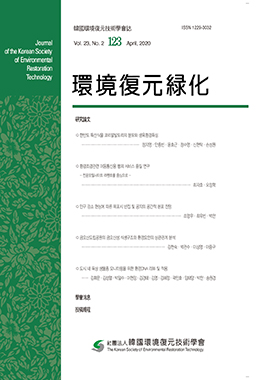Scientific trust and quantification of traditional species investigation and results that have been used in ecology for decades has always been a problem and concern for ecologists. Global ecologists have proposed DNA-based species investigation studies to find answers to problems. In this study, we reviewed the global trend of research on environmental DNA(eDNA), which is a method for monitoring species by detecting DNA of organisms naturally mixed in environmental samples such as water, soil, and feces. The first eDNA research confirmed the possibility of species investigation at the molecular level, and commercialization of NGS(Next Generation Sequencing) and DNA metabarcoding elicits efficient and quantitative species investigation results, and eDNA research is increasing in the filed of ecology. In this study, mammals and birds were detected using MiMammal universal primers from 23 samples(3 natural reserves; 20 water bowls) out of 4 patches to verify eDNA for urban ecosystems in Suwon, and eDNA was verified by performing camera trapping and field survey. Most terrestrial species were detected through eDNA, and particularly, mice(Mus musculus), and Vinous-throated Parrotbill (Sinosuthora webbiana) were identified only with eDNA, It has been confirmed to be highly effective by investigating techniques for small and internal species. However, due to the lack of resolution of the primer, weasels(Mustela sibirica) and squirrels(Melanochromis auratus) were not detected, and it was confirmed that the traditional investigation method was effective only for a few species, such as Mogera robusta(Mogera robusta). Therefore, it is judged that the effects of species investigation can be maximized only when eDNA is combined with traditional field survey and Camera trapping to complement each other.




